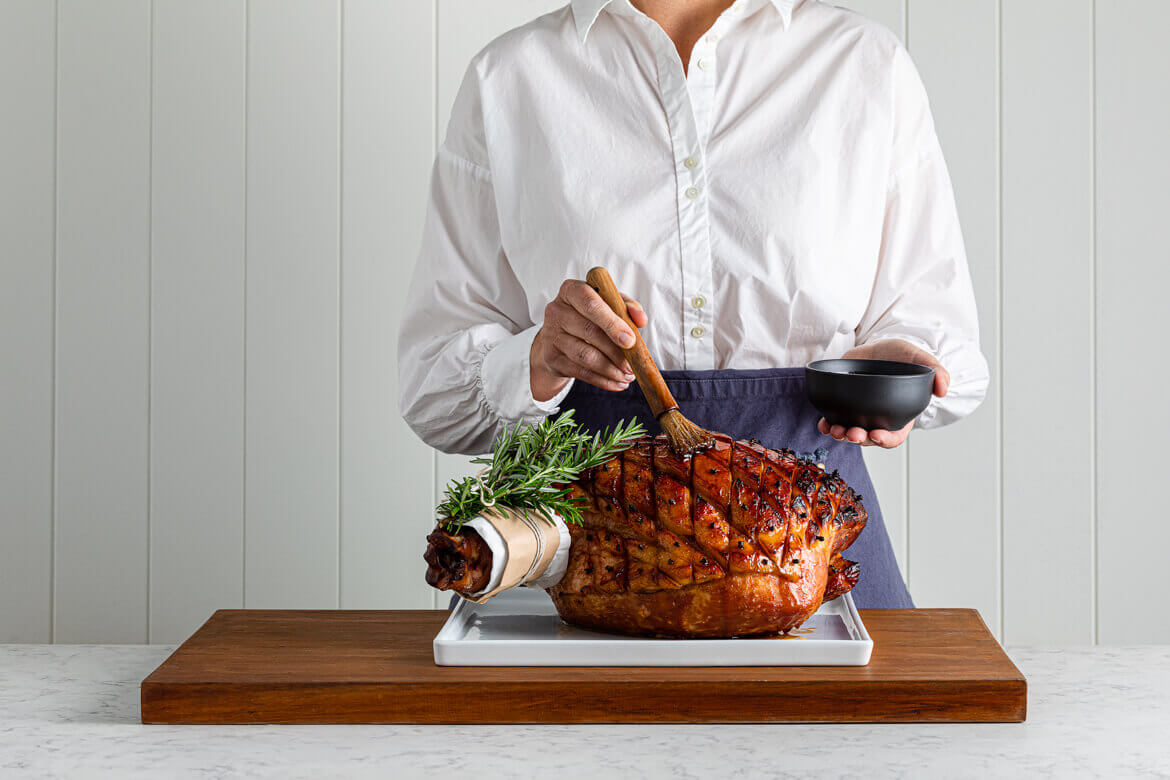How to Glaze and Bake a Christmas Ham
A ham without glaze is like Christmas without carols – it just isn’t the same. Leigh joins our resident foodie Fraeona in the kitchen to discover how to glaze a ham the easy way. With Fraeona’s go-to ham glaze recipe and a few clever tricks, your glazed ham recipe will come out glossy, caramelised, and ready to wow.

Instructions
-
Hock Decoration – To give the ham a decorative look, use a paring knife to cut around the base of the hock in a zigzag pattern, about 10cm from the end. You can also just simply cut straight around the same area if you are short on time
-
Removing the Rind – To remove the rind in one piece, start by using a paring knife and running it around the entire edge about 3 cm underneath the rind. Be careful that you keep the fat attached to the ham and run the knife up against the rind. Warm your hands in a small bowl of warm water and run your fingers between the rind and fat gently moving back and forth to gently release it. Carefully use your other hand to gently pull back the rind.
-
Diamond Pattern – To give the ham a diamond pattern, score the fat, 2.5cm wide and about ¾ way through in a diamond pattern by running your knife one way and back in the opposite direction the second time. Taking care not to cut into the meat as some of the fat diamonds could fall off during baking.
-
Clove Decoration – Push one whole clove into the middle of each diamond shape and continue until each diamond has a clove.
-
Ready to Bake – Place the ham onto a rack inserted into roasting pan and pour 3/4 cup of water into the bottom of the pan to prevent the sugary glaze from burning the bottom and to use to baste the ham as it cooks. The water mixes with the glaze that drips off the ham and reduces as it cooks and can be used to create a thicker glaze application for presentation once fully baked. If the ham needs stabilising, then scrunch up some foil and place under certain areas to ensure the ham sits flat so that it caramelises evenly.
-
Glazing – To get an even coverage, use a pastry brush to brush the glaze over the clove-studded ham it will run off a little at this stage but as it cooks it thickens and sticks.
-
Baking and Basting – Place in the oven 150/160C for 1.5-2 hours depending on the size. Slow and low is the key to prevent burning and create a consistent colour all over. Baste every 20 mins as this is crucial to create a lovely, deep caramelised colour. Once it’s cooked, take it out to rest and keep basting the ham with more glaze and pan juices as this creates a gorgeous thick glaze.
-
Decoration – Wrap the end of the hock with baking paper and string, ribbons if desired as this helps to be able to hold onto something as you carve it – and presents well.
Extra Tips


